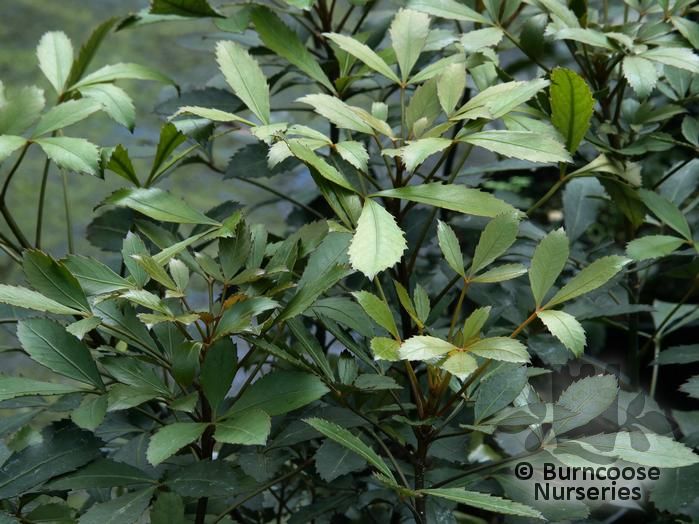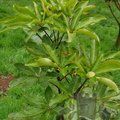PSEUDOPANAX

<





>
PSEUDOPANAX
Genus of 7 species of evergreen tres and shrubs from forest and scrub in New Zealand which are becoming popular as neat, architectural plants. Some have distinctly different juvenile and adult forms of foliage.
Full Plant Details - Sun/Soil & other attributes
-
Architectural interest
-
Exotic plants
-
 Good to know
Requires a male nearby for pollination for fruit
Good to know
Requires a male nearby for pollination for fruit -
 Pests & Diseases
None
Pests & Diseases
None -
 Place of origin
New Zealand (North Island)
Place of origin
New Zealand (North Island) -
Evergreen3- or 5-palmate, deep-green leaves. Juvenile plants have 5 lance-shaped, coarsely and irregularly toothed leaflets to 12cm (5in) long. On mature plants they have 3 smaller, stalkless, obovate, entire to sparsely toothed leaflets to 10cm (4in) long
-
 Yellow
Yellow-green.
Yellow
Yellow-green. -
Australian / New Zealand
-
Coastal / windswept
-
Frost hardy (down to -5)
-
 Palmate
Palmate
-
 Lanceolate
Lanceolate
-
 Height
3m-6m(10ft-20ft)
Height
3m-6m(10ft-20ft) -
 Spread
2m-4m (6ft-12ft)
Spread
2m-4m (6ft-12ft) -
Tall ShrubErect to spreading large shrub or small tree with stout branches. Produces flowers in compound umbels 10cm (4in) across in summer followed by purple-black fruit 5mm (¼in) long if pollinated
-
 Pruning group 1
Suitable for: Deciduous and evergreen trees, and some deciduous shrubs.
Pruning group 1
Suitable for: Deciduous and evergreen trees, and some deciduous shrubs.
Pruning: Minimal pruning required. Prune wayward or crossing branches to maintain a healthy framework.
When: When dormant in the late winter/early spring. Some in the summer/autumn to prevent bleeding of sap.
-
 Half hardy - unheated greenhouse / mild winter
Hardy in coastal and relatively mild parts of the UK except in severe winters and a risk from sudden (early) frosts. May be hardy elsewhere with wall shelter or good micro-climate. Likely to be damaged or killed in cold winters. Plant can withstand temperatures down to -5°C (23°F)
Half hardy - unheated greenhouse / mild winter
Hardy in coastal and relatively mild parts of the UK except in severe winters and a risk from sudden (early) frosts. May be hardy elsewhere with wall shelter or good micro-climate. Likely to be damaged or killed in cold winters. Plant can withstand temperatures down to -5°C (23°F) -
Autumn Seasonal Interest
-
Spring Seasonal Interest
-
Summer Seasonal Interest
-
Winter Seasonal Interest
-
Fertile well drained soil
-
 Full sun
Shelter from cold, drying winds
Full sun
Shelter from cold, drying winds -
 Partial shade
Partial shade
-
Mature Size3m-6m(10ft-20ft)


2m-4m (6ft-12ft)
View Planting Tips and Care Advice
Pseudopanax - Growing Guide
View Planting Combinations







